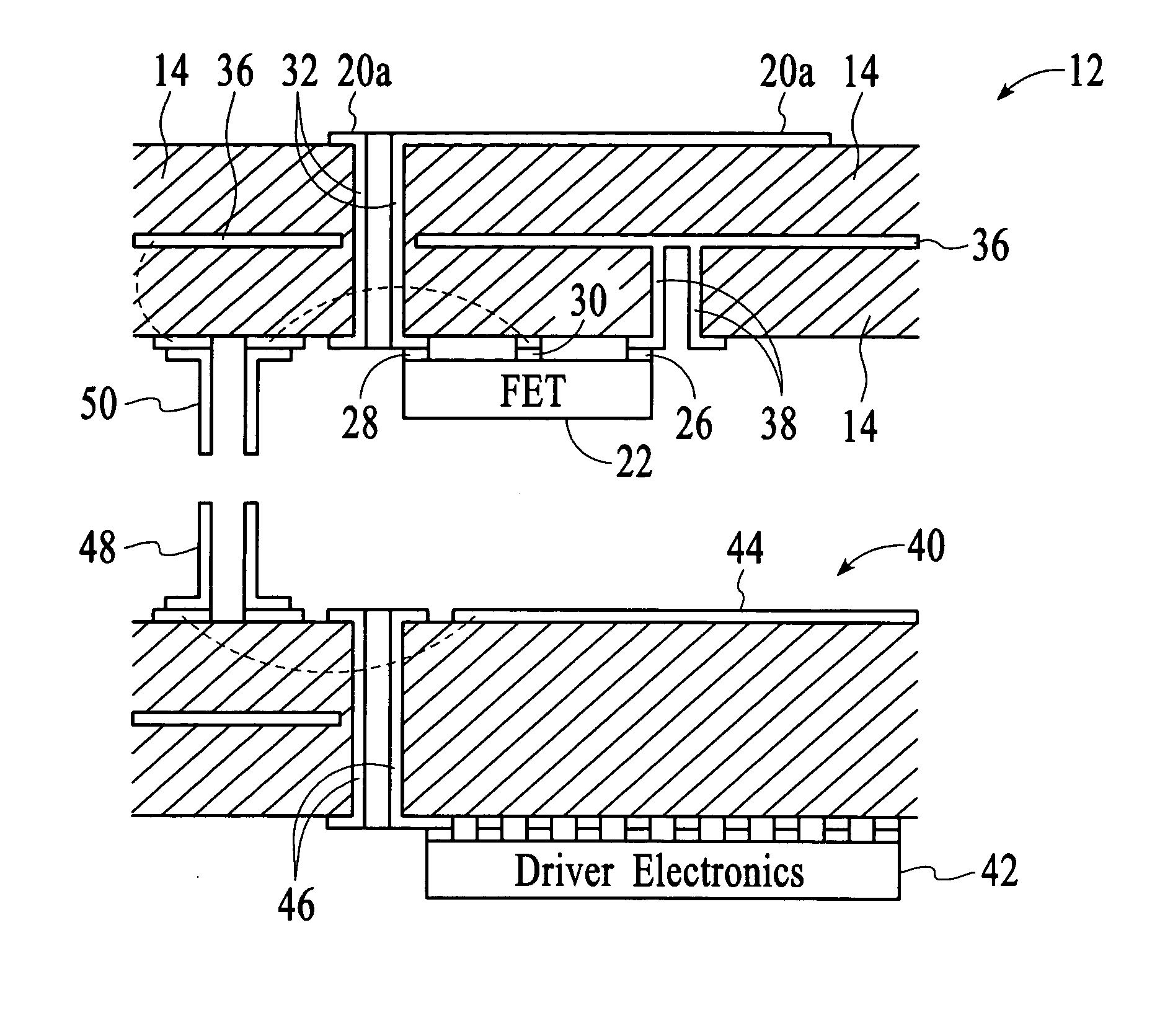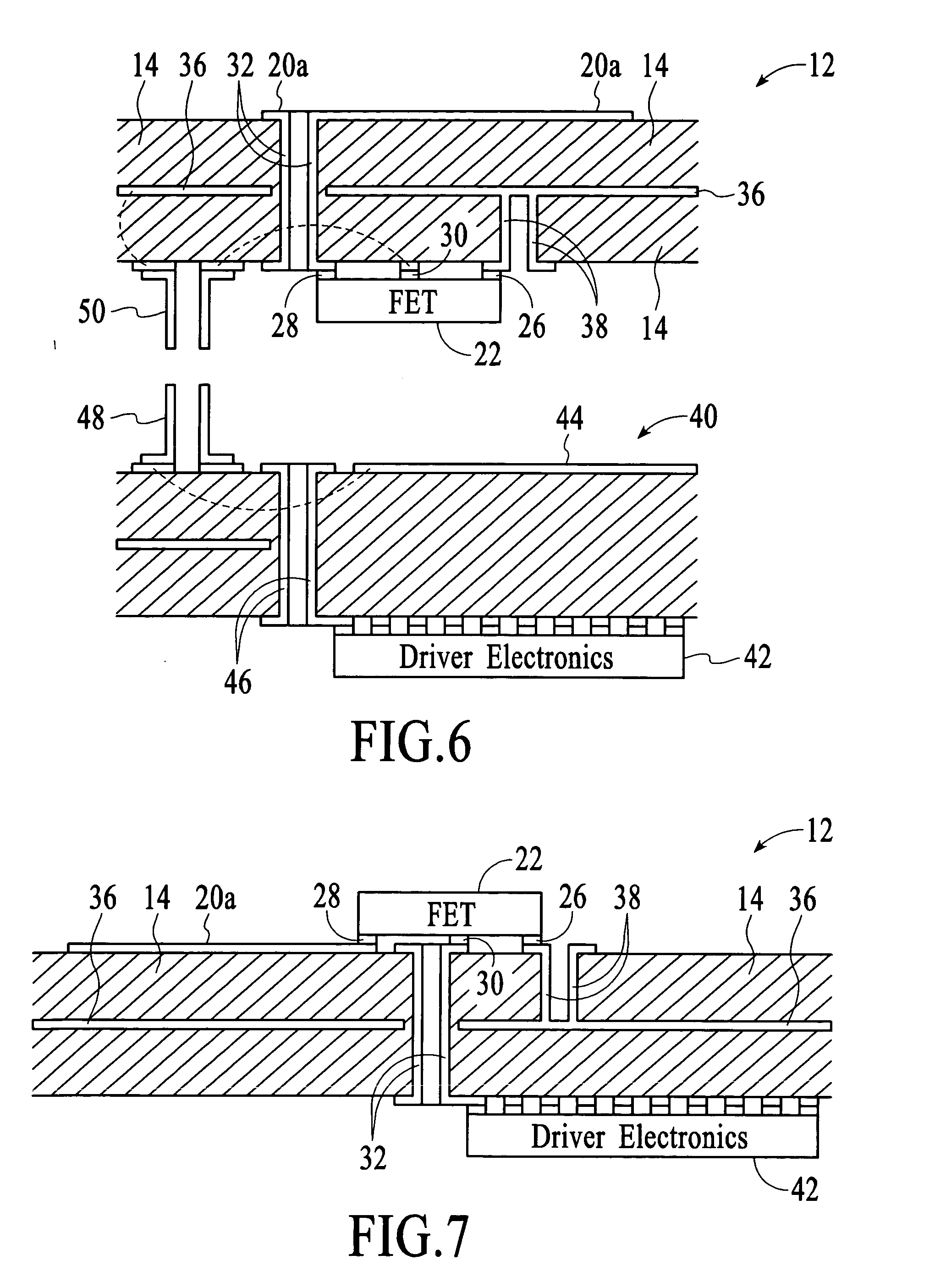Device for reflecting electromagnetic radiation
a technology of electromagnetic radiation and reflector, which is applied in the field of reflectors, can solve the problems of high cost of each packaged device, inability to provide the desired impedance performance characteristics of low-cost transistors, and prohibitively high cost of reflectarrays with such devices. achieve the effect of optimal phase-amplitude performan
- Summary
- Abstract
- Description
- Claims
- Application Information
AI Technical Summary
Benefits of technology
Problems solved by technology
Method used
Image
Examples
Embodiment Construction
[0014] A reflectarray utilizes switching devices with non-ideal impedance characteristics to vary the impedance of reflecting elements. The antennas of the reflecting elements are configured as a function of the impedance of the non-ideal switching devices to provide optimal phase-amplitude performance. In particular, the antennas are configured such that the impedance of each antenna is proportional to the square root of the impedance of the non-ideal switching devices when in an on state and when in an off state.
[0015] Reflectarrays are passive systems that reflect externally provided electromagnetic radiation. FIG. 1 depicts an example of a reflectarray 10 for microwave and millimeter-wave applications. The reflectarray includes distinct reflecting elements 12 that reflect electromagnetic radiation with varying phase depending on their impedance state. Ideally, the reflecting elements reflect electromagnetic radiation with a phase shift of 180 degrees when their impedance is hig...
PUM
 Login to View More
Login to View More Abstract
Description
Claims
Application Information
 Login to View More
Login to View More - R&D
- Intellectual Property
- Life Sciences
- Materials
- Tech Scout
- Unparalleled Data Quality
- Higher Quality Content
- 60% Fewer Hallucinations
Browse by: Latest US Patents, China's latest patents, Technical Efficacy Thesaurus, Application Domain, Technology Topic, Popular Technical Reports.
© 2025 PatSnap. All rights reserved.Legal|Privacy policy|Modern Slavery Act Transparency Statement|Sitemap|About US| Contact US: help@patsnap.com



